December
2016
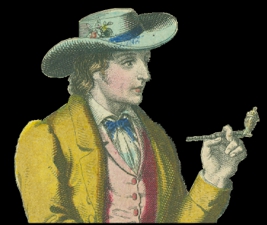 |
Always a
hectic month with Sinterklaas, the Christmas days and New Years eve, all
needing the necessary preparations, so not much spare time. Still we
tried to follow the offer on the internet as best as we could and the
result was a very modest number of decks to add to our collection.
From the Dutch auction site we bought a rarely seen deck, that was
produced by the Speelkaartenfabriek Nederland around 1955, with a
different movie actress on each card. It made a great addition again to
our SN collection.
Also on the shortlist this month was a French deck with Greek courts,
that looked very familiar but in an unfamiliar way and turned out to be
the father of the (later, mirrored) Greek decks with that antique
pattern. |
|
The courts from our chosen
deck also looked very familiar, but in an unfamiliar way and so did the
scenic aces. |
So this month again Swiss costumes! When the deck had arrived, we immediately took out the holder with the
antique Swiss decks and found out why these designs looked so familiar: they are
the same as in the Swiss Regional Costumes deck (c1890), but without
the scenic backgrounds. We already had the idea that this would be an earlier
version, but to be sure we contacted our Swiss friend Walter Haas. Of course he
knew this version and told us that the original wrapper, which is kept in
Schaffhausen, mentions Diessenhofen as location. The Müller company
manufactured their cards there until 1876. Walter also told us that the deck has
been published with two different back designs. One shows flowers from the Alps
and the other has the honeycomb design of our deck. He couldn't tell if this was
an older or just a cheaper publication, but also mentioned that Wüst had
produced a Swiss costume deck with a honeycomb back design at about the same
time and that the use of the same back design by Müller could have been for
competitive reasons.
Walter dated our deck as c1870. The reason for this is given at the bottom of
this page where we make a comparison of some cards from this deck and the c1890
version.
But first... enjoy
the fine graphics of this deck.
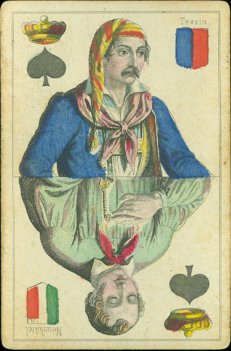 |
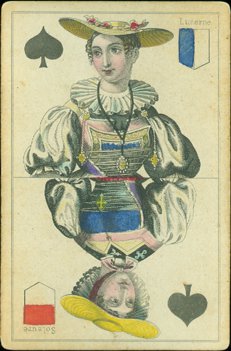
|
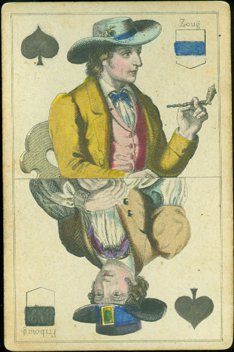
|
|
The deck was
printed in lithography and the courts and pips were stencil colored. |
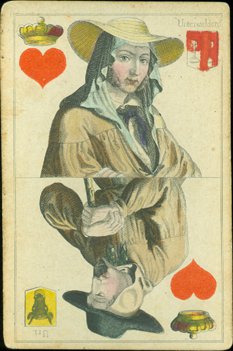 |
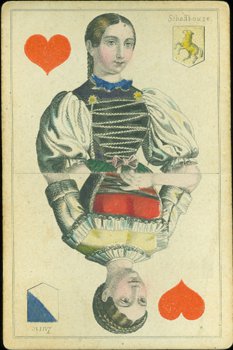
|

|
| The double headed courts represent different regions or
cities on each side. |
The aces have a single image with a famous scenic view.
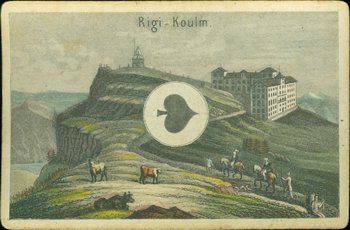

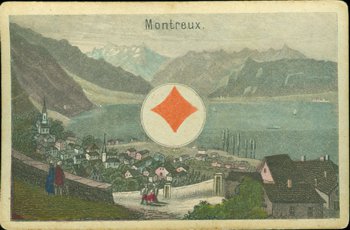
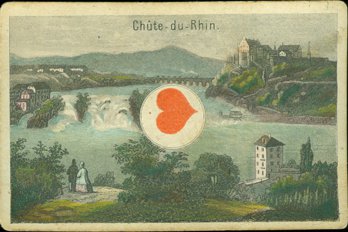
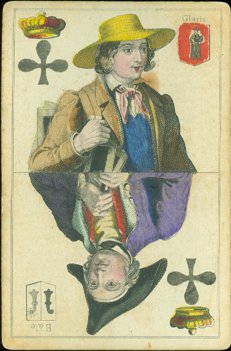 |
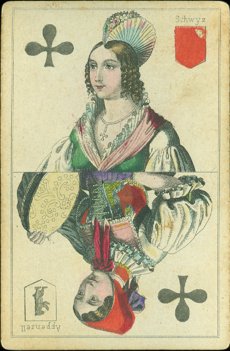
|
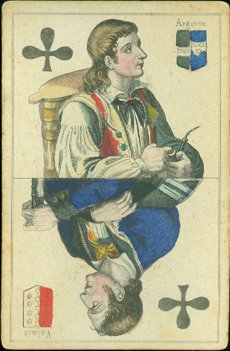
|
|
Although the stencil coloring of the courts has been done
very neatly, the heraldic weapons
seem to have been painted by hand or the stencil was used in a rather rough
way.
|
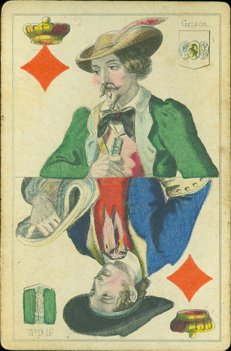 |
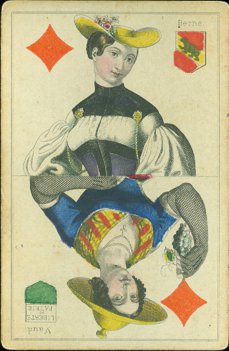
|

|
The honeycomb beck design.
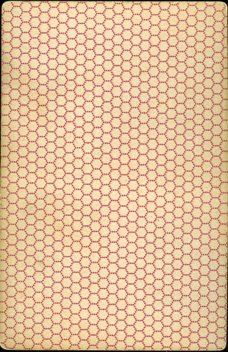
A comparison of both versions.....
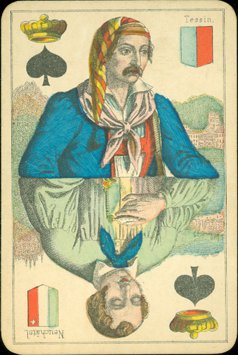 |
The version from around 1890 of the Swiss Regional
Costumes deck, is easy to recognize with the scenic
backgrounds.
Of course there are some color differences too,
some more visible than others.
Here below an example of the difference in coloring
of the regional or city emblems.
In the later version they were color printed and in the early version
crudely colored by hand or with the use of a stencil. |

|
|

|

|
 |

|
|
Below the
aces from the later deck. The ace of spades shows the Rigi railroad, wich
was constructed between 1868 and 1871. Walter Haas suggested that the
image could have been made before the railroad was actually finished,
because the railroad routes in the mountains were an adventurous
attraction for tourists in those days. |
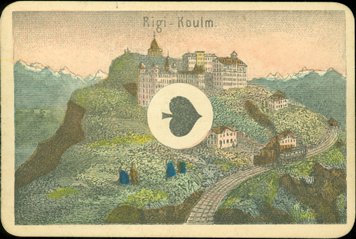 |
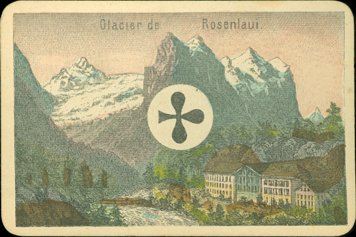
|
|
Of course the backs have made the later deck famous:
each back shows a different scenic view. |
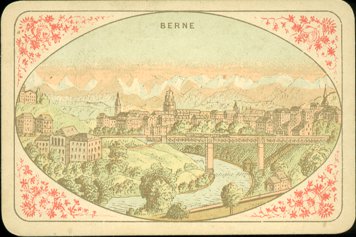 |
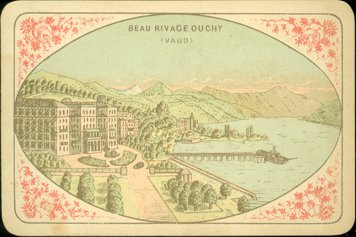
|
BACK TO PRESENT
MONTH
























